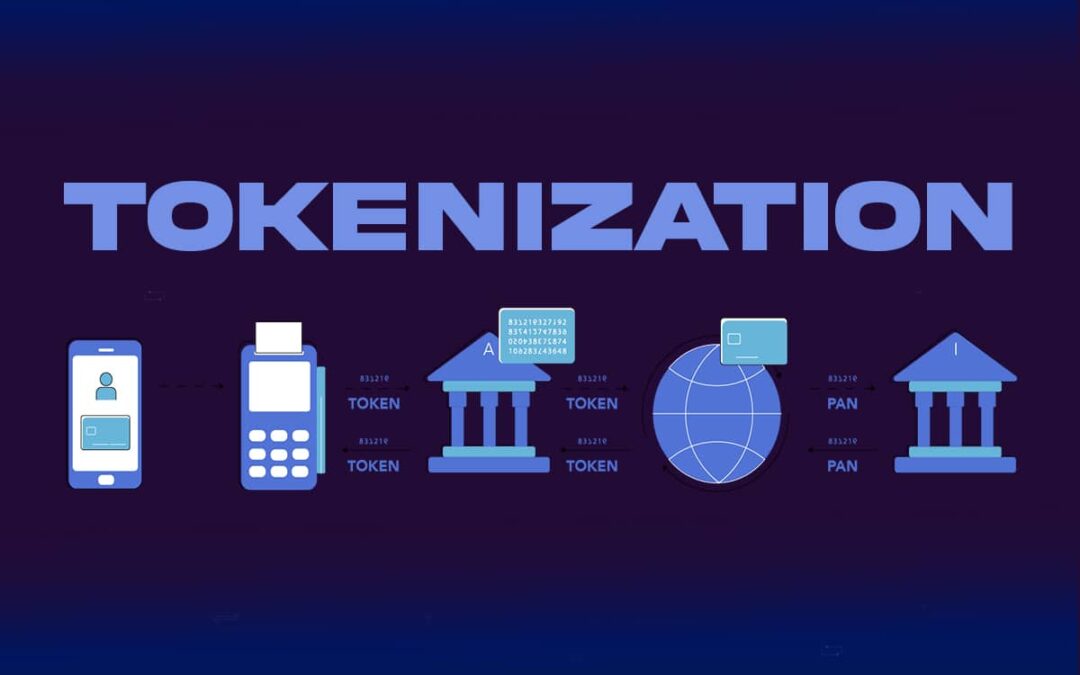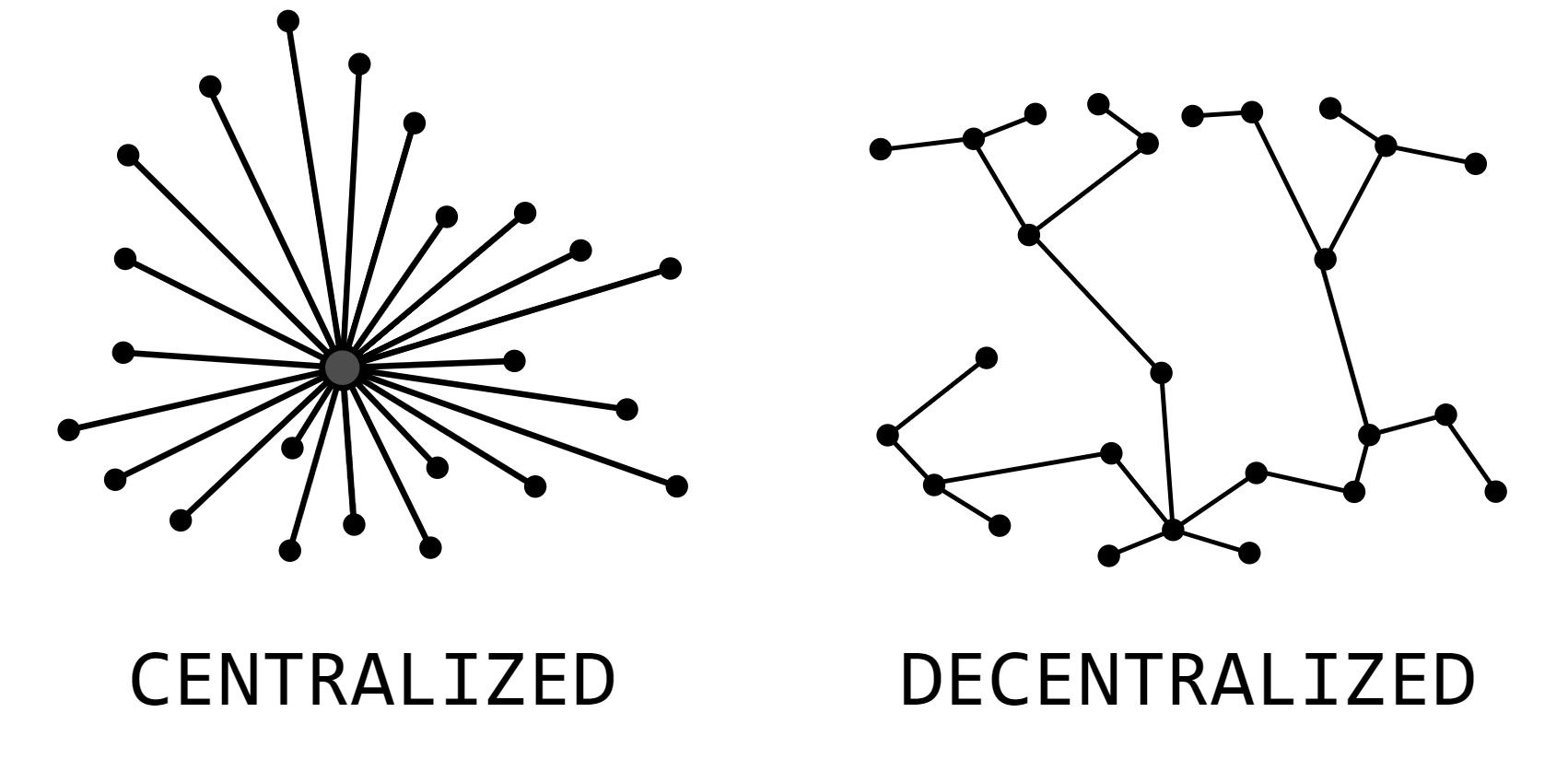Harmony Unveiled: Exploring the Interplay between Software and Cryptocurrency
Harmony Unveiled: Exploring the Interplay between Software and Cryptocurrency
"In the symphony of technology, software and cryptocurrency harmonize, each playing distinct yet interconnected melodies. Together, they compose the soundtrack of innovation, weaving a tapestry that transcends boundaries, reshaping economies, and conducting a future where decentralized possibilities and software-driven advancements coalesce in a dynamic duet of progress"
Summary
Embark on a journey through the digital frontier as we delve into the intricacies of software and cryptocurrency. "Harmony Unveiled" uncovers the hidden similarities between these technological giants, unraveling a narrative that spans programming languages, decentralized governance, and the societal impact of their convergence. Join us in this exploration of the dynamic relationship shaping the future of technology.
Introduction
In the ever-evolving landscape of technology, two entities have emerged as transformative forces—software and cryptocurrency. At first glance, they may seem worlds apart, with one primarily associated with digital applications and the other with decentralized financial systems. However, a closer examination reveals an intricate web of similarities that underscores their shared foundations and mutual dependence.
Common Language
Software and cryptocurrency both communicate in a language of their own. Just as programming languages serve as the backbone of software, blockchain technology forms the bedrock of cryptocurrency. In essence, both rely on a set of rules and protocols to function efficiently. Whether it's coding a complex algorithm or establishing consensus mechanisms within a blockchain, a common language is essential for their successful operation.
Decentralization
Perhaps the most striking similarity between software and cryptocurrency is the concept of decentralization. In the realm of software, decentralized applications (DApps) have gained traction for their ability to operate without a central authority. Similarly, cryptocurrency, most notably exemplified by Bitcoin and Ethereum, relies on decentralized networks to validate and record transactions. This shared commitment to decentralization embodies a paradigm shift from traditional, centralized systems.
Open Source Philosophy
Another parallel between software and cryptocurrency lies in their embrace of open-source philosophy. The collaborative nature of open-source software development mirrors the ethos of many cryptocurrency projects. Both communities thrive on transparency, inviting contributions from a diverse range of developers and enthusiasts. This shared commitment to openness fosters innovation and ensures that the technology remains accessible to a global audience.
Constant Evolution
Software and cryptocurrency are dynamic entities, continuously evolving to meet the demands of a rapidly changing world. Software undergoes regular updates and improvements to enhance functionality and security. Similarly, the cryptocurrency space witnesses frequent protocol upgrades, introducing new features or addressing vulnerabilities. The iterative nature of both domains reflects a commitment to staying ahead of technological challenges and adapting to emerging trends.
Security Concerns
As software and cryptocurrency become increasingly intertwined with daily life, security concerns loom large. Whether it's safeguarding sensitive data in a software application or securing assets in a cryptocurrency wallet, both domains grapple with the imperative of fortifying against potential threats. The emphasis on encryption, secure coding practices, and robust authentication mechanisms underscores a shared dedication to ensuring user safety.
Interconnectivity
Beyond their shared technical underpinnings, software and cryptocurrency are increasingly becoming interconnected in the modern technological landscape. The rise of decentralized finance (DeFi) applications exemplifies this synergy, where software platforms leverage blockchain technology to facilitate financial transactions without the need for traditional intermediaries. Smart contracts, a feature embedded in certain blockchain networks, enable the execution of predefined agreements within software applications, offering a new level of automation and efficiency.
The Evolution of Smart Contracts
Smart contracts, a fundamental aspect of blockchain-based systems, epitomize the fusion of software and cryptocurrency. Originally introduced by Ethereum, these self-executing contracts automatically enforce the terms of an agreement when predefined conditions are met. This concept mirrors the logic-driven nature of software, where coded instructions dictate the behavior of a program. The development and adoption of smart contracts showcase a convergence of programming principles and financial protocols, highlighting how software and cryptocurrency coalesce to redefine traditional processes.
Tokenization and Digital Assets
The concept of tokenization further blurs the lines between software and cryptocurrency. In the digital realm, tokens represent a form of programmable assets, often created on blockchain platforms. These tokens can signify anything from ownership of a real-world asset to access rights within a software ecosystem. This fusion of software-driven tokenization and cryptocurrency enables the creation of decentralized applications that leverage digital assets, showcasing a harmonious integration of their respective functionalities.
User Experience and Interface Design
Another shared aspect between software and cryptocurrency is their emphasis on user experience (UX) and interface design. As software applications strive for intuitive interfaces to enhance user engagement, cryptocurrency platforms recognize the importance of user-friendly wallets and intuitive dashboards. Both domains understand that accessibility and ease of use are critical factors in mainstream adoption. The collaboration between UX designers and blockchain developers exemplifies the necessity of creating interfaces that bridge the gap between complex underlying technology and user-friendly interactions.
Innovation Catalysts
Software and cryptocurrency act as catalysts for innovation, driving each other forward in a symbiotic relationship. Advances in software development, such as improved programming languages and frameworks, create a fertile ground for the evolution of blockchain technology. Conversely, the unique challenges posed by the decentralized nature of cryptocurrency networks stimulate novel solutions and advancements in software architecture. This interplay of innovation underscores how the two domains continually push the boundaries of what is technologically feasible.
Legal and Ethical Considerations
Both software and cryptocurrency operate within legal and ethical frameworks that are continuously evolving. As software applications collect and process vast amounts of user data, issues related to privacy, security, and ethical use arise. Similarly, the decentralized and pseudonymous nature of certain cryptocurrencies raises concerns about regulatory compliance, money laundering, and illicit activities. Addressing these challenges requires collaborative efforts from legal experts, policymakers, and technologists to create a balanced and secure digital environment.
In summary, the interconnection between software and cryptocurrency goes beyond technical similarities, extending into realms such as finance, user experience, and legal considerations. As these two domains continue to evolve, their convergence is likely to reshape the landscape of technology, offering new possibilities and challenges that demand interdisciplinary collaboration and innovative solutions.
Societal Impact
The profound influence of software and cryptocurrency extends far beyond technological realms, permeating into the fabric of societies globally. As these technologies gain prominence, their societal impact becomes increasingly evident, shaping economic structures, governance models, and the overall social landscape.
Economic Transformation
Software and cryptocurrency are catalysts for economic transformation, introducing novel paradigms that redefine traditional financial systems. Cryptocurrencies, as decentralized digital assets, challenge the conventional notions of currency and banking. Bitcoin, the pioneering cryptocurrency, serves as a decentralized store of value and a medium of exchange, operating independently of traditional financial institutions.
Simultaneously, software-driven innovations in financial technology (FinTech) are reshaping how individuals interact with money. Mobile banking apps, payment gateways, and peer-to-peer payment systems are examples of software applications that streamline financial transactions, making them more accessible and efficient. This convergence of software and cryptocurrency is disrupting established economic structures, providing individuals with greater financial autonomy and inclusion.
Governance and Decentralization
The principles of decentralization, inherent in both software and cryptocurrency, have the potential to redefine governance models. Traditional governance structures often involve centralized decision-making bodies, leading to concerns about transparency, accountability, and inclusivity. In contrast, decentralized applications built on blockchain technology enable transparent, trustless, and community-driven governance.
Cryptocurrency projects frequently employ decentralized autonomous organizations (DAOs), where decisions are made through consensus mechanisms and voting by token holders. This democratic approach to governance, facilitated by software protocols, challenges traditional power dynamics and offers a glimpse into a more inclusive and participatory form of decision-making.
Social Empowerment
Software and cryptocurrency empower individuals by providing tools for financial inclusion, expression, and collaboration. Cryptocurrencies offer an alternative financial system for the unbanked and underbanked populations, allowing them to participate in the global economy. Additionally, blockchain-based social platforms leverage software to create decentralized spaces for content creation, sharing, and monetization, giving users greater control over their digital presence.
Smart contracts, a feature of blockchain technology, facilitate programmable agreements, enabling individuals to engage in trustless interactions without the need for intermediaries. This empowerment of individuals through decentralized technologies challenges existing power structures and fosters a more equitable distribution of resources.
Challenges and Ethical Considerations
Despite their transformative potential, the widespread adoption of software and cryptocurrency also brings forth a set of challenges and ethical considerations. Issues related to privacy, security, and responsible use of technology come to the forefront. The pseudonymous nature of some cryptocurrencies raises concerns about their potential misuse for illegal activities, necessitating the development of regulatory frameworks that balance innovation with societal well-being.
Additionally, the environmental impact of certain cryptocurrency mining operations has sparked debates about sustainability. As the demand for computational power increases, there is a growing need for solutions that mitigate the environmental footprint of cryptocurrency networks.
Future Trajectories
As software and cryptocurrency continue to evolve, their future trajectories hold promise for unprecedented advancements and transformative changes. While both fields are poised for growth, they also face challenges that necessitate thoughtful solutions. Examining the potential trajectories of software and cryptocurrency provides insight into the dynamic landscape of technology.
Advancements in Software Development
The future of software development is marked by a relentless pursuit of efficiency, security, and scalability. Advancements in programming languages, artificial intelligence, and decentralized technologies are expected to shape the next generation of software applications.
- Decentralized Applications (DApps): The rise of decentralized applications is likely to continue, fueled by the growing interest in blockchain technology. DApps, which operate on decentralized networks, offer enhanced security, transparency, and resistance to censorship. Developers are exploring innovative use cases for DApps, ranging from finance and supply chain management to healthcare and social networking.
- Artificial Intelligence (AI) Integration: The integration of AI into software applications is poised to revolutionize user experiences. Machine learning algorithms will enable software to adapt and learn from user behavior, providing personalized and predictive functionalities. AI-driven applications, combined with decentralized technologies, may usher in a new era of intelligent, self-executing software.
- Interconnectivity and Internet of Things (IoT): The interconnectivity of devices and the Internet of Things will play a central role in future software development. Smart homes, autonomous vehicles, and industrial automation are areas where software will seamlessly integrate with physical devices, creating an interconnected ecosystem. Blockchain technology may provide the necessary security and trust mechanisms for these interconnected systems.
The Evolution of Cryptocurrency
Cryptocurrency, as a dynamic and evolving field, is likely to witness significant developments that shape its trajectory in the coming years.
- Scalability Solutions: Scalability remains a challenge for many blockchain networks. To address this, ongoing research and development are focused on implementing solutions like layer-two scaling solutions, sharding, and improved consensus algorithms. These advancements aim to enhance transaction throughput and reduce latency, making cryptocurrencies more viable for everyday transactions.
- Interoperability: The future of cryptocurrency involves increased interoperability between different blockchain networks. Efforts to create interoperable protocols and standards will enable seamless transfer of assets and information across diverse blockchain ecosystems. This interoperability is crucial for the maturation of the cryptocurrency space.
- Regulatory Developments: As cryptocurrencies gain wider acceptance, regulatory frameworks will continue to evolve. Clearer regulations may provide a stable environment for innovation while addressing concerns related to fraud, money laundering, and consumer protection. Striking a balance between regulatory compliance and preserving the decentralized ethos of cryptocurrencies will be a key challenge.
Collaborative Potential
The collaborative potential between software and cryptocurrency is perhaps the most exciting aspect of their future trajectories. As they continue to converge, we can anticipate synergies that amplify the impact of both technologies.
- Decentralized Finance (DeFi) Ecosystem: The intersection of software and cryptocurrency is evident in the flourishing DeFi ecosystem. DeFi applications leverage blockchain technology to recreate traditional financial services without the need for intermediaries. This trend is likely to continue, with the potential for broader adoption and integration with mainstream financial systems.
- Tokenization of Assets: The tokenization of real-world assets using blockchain technology represents a collaborative frontier for software and cryptocurrency. Real estate, art, and even intellectual property can be represented as digital tokens on blockchain platforms, enabling fractional ownership and liquidity. This integration has the potential to reshape traditional asset markets.
- Cross-Industry Collaboration: Software and cryptocurrency are increasingly finding applications across diverse industries. From healthcare and supply chain management to entertainment and energy, collaborative efforts are breaking down silos and fostering innovation. Cross-industry collaborations may lead to the development of integrated solutions that leverage the strengths of both technologies.
In conclusion, the future trajectories of software and cryptocurrency are intertwined with innovation, challenges, and collaborative potential. The dynamic nature of these fields invites exploration, adaptation, and a shared commitment to shaping a technological landscape that is not only advanced but also responsible and inclusive.
This comprehensive exploration of the similarities between software and cryptocurrency highlights the intricate relationship between these two technological realms, offering insights into their shared foundations, societal impact, and future trajectories. As we stand at the intersection of these dynamic fields, the journey ahead promises continued exploration, innovation, and the continuous evolution of technology.
Conclusion
In conclusion, the societal impact of software and cryptocurrency is multifaceted, influencing economic structures, governance models, and individual empowerment. As these technologies continue to evolve, it becomes imperative for societies to navigate the challenges responsibly, fostering a harmonious integration of innovation and ethical considerations.
FAQ Section
Q1: What is the fundamental difference between software and cryptocurrency?
A1: While software is a broad term encompassing computer programs, applications, and operating systems, cryptocurrency is a specific application of blockchain technology for creating decentralized digital currencies. Software represents a wide array of digital tools, whereas cryptocurrency is a subset within the broader software ecosystem.
Q2: How are software and cryptocurrency connected in terms of language and development?
A2: Both software and cryptocurrency rely on programming languages and development frameworks. The connection lies in the coding practices, algorithms, and protocols used to create applications. While software may involve various languages, cryptocurrency commonly employs languages like Solidity for smart contracts.
Q3: Can you elaborate on the decentralization aspect shared by software and cryptocurrency?
A3: Decentralization is a key similarity between software and cryptocurrency. In software, decentralized applications (DApps) operate without a central authority. Cryptocurrency, especially blockchain-based ones, relies on decentralized networks for transaction validation. Both prioritize removing intermediaries, enhancing security, and fostering trust in a distributed manner.
Q4: How does open-source philosophy apply to both software and cryptocurrency?
A4: Open-source philosophy involves making source code accessible to the public for collaboration and improvement. Both software and cryptocurrency projects often adopt open-source principles. Software development benefits from collaborative coding, and cryptocurrency projects, like Bitcoin and Ethereum, encourage community participation, fostering innovation and transparency.
Q5: What role do smart contracts play in the relationship between software and cryptocurrency?
A5: Smart contracts are self-executing contracts with predefined rules written in code. While originating from the cryptocurrency space, particularly Ethereum, smart contracts have influenced software development. They automate agreements within software applications, providing a layer of trust and programmability, showcasing the cross-pollination between the two domains.
Q6: How are software and cryptocurrency shaping economic structures?
A6: Cryptocurrencies challenge traditional economic structures by introducing decentralized, borderless, and trustless financial systems. On the other hand, software, especially FinTech applications, is transforming how individuals interact with money. The combination of software innovations and cryptocurrency is contributing to the creation of novel economic paradigms.
Q7: What ethical considerations are associated with the convergence of software and cryptocurrency?
A7: Privacy, security, and responsible technology use are significant ethical considerations. Software applications deal with vast amounts of user data, requiring responsible handling. Cryptocurrencies, with their pseudonymous nature, demand ethical considerations to prevent misuse. Striking a balance between innovation and ethical standards is crucial in this evolving technological landscape.
Q8: How can the collaboration between software and cryptocurrency impact governance models?
A8: Decentralized technologies, inherent in both software and cryptocurrency, can reshape governance models. Cryptocurrency projects often use decentralized autonomous organizations (DAOs) for decision-making. This collaborative, community-driven governance model can inspire similar approaches in software projects, fostering transparency, inclusivity, and democratic decision-making.
Q9: What are the challenges faced by software and cryptocurrency in terms of scalability and regulation?
A9: Scalability challenges persist in both software and cryptocurrency. While software grapples with the need for efficient handling of increased data and user interactions, cryptocurrencies face scalability issues with transaction throughput. Regulation is another common challenge, as both domains navigate evolving legal frameworks and strive for a balance between innovation and compliance.
Q10: What does the future hold for the collaboration between software and cryptocurrency?
A10: The future is marked by continuous innovation, advancements in AI, increased interoperability, and deeper integration across industries. Collaborations in decentralized finance (DeFi), asset tokenization, and cross-industry initiatives are likely to reshape traditional boundaries, providing a glimpse into a more interconnected and technologically advanced future.
References
- Narayanan, A., Bonneau, J., Felten, E., Miller, A., & Goldfeder, S. (2016). Bitcoin and Cryptocurrency Technologies: A Comprehensive Introduction. Princeton University Press.
- Antonopoulos, A. M. (2014). Mastering Bitcoin: Unlocking Digital Cryptocurrencies. O'Reilly Media.
- Szabo, N. (1996). Smart Contracts: Building Blocks for Digital Markets. Extropy Journal, 16.
- Mougayar, W. (2016). The Business Blockchain: Promise, Practice, and Application of the Next Internet Technology. John Wiley & Sons.
- O'Reilly, T. (1999). Open Sources: Voices from the Open Source Revolution. O'Reilly Media.






















![[LIVE] Engage2Earn: auspol follower rush](https://cdn.bulbapp.io/frontend/images/c1a761de-5ce9-4e9b-b5b3-dc009e60bfa8/1)

![[ℕ𝕖𝕧𝕖𝕣] 𝕊𝕖𝕝𝕝 𝕐𝕠𝕦𝕣 𝔹𝕚𝕥𝕔𝕠𝕚𝕟 - And Now What.... Pray To The God Of Hopium?](https://cdn.bulbapp.io/frontend/images/79e7827b-c644-4853-b048-a9601a8a8da7/1)














